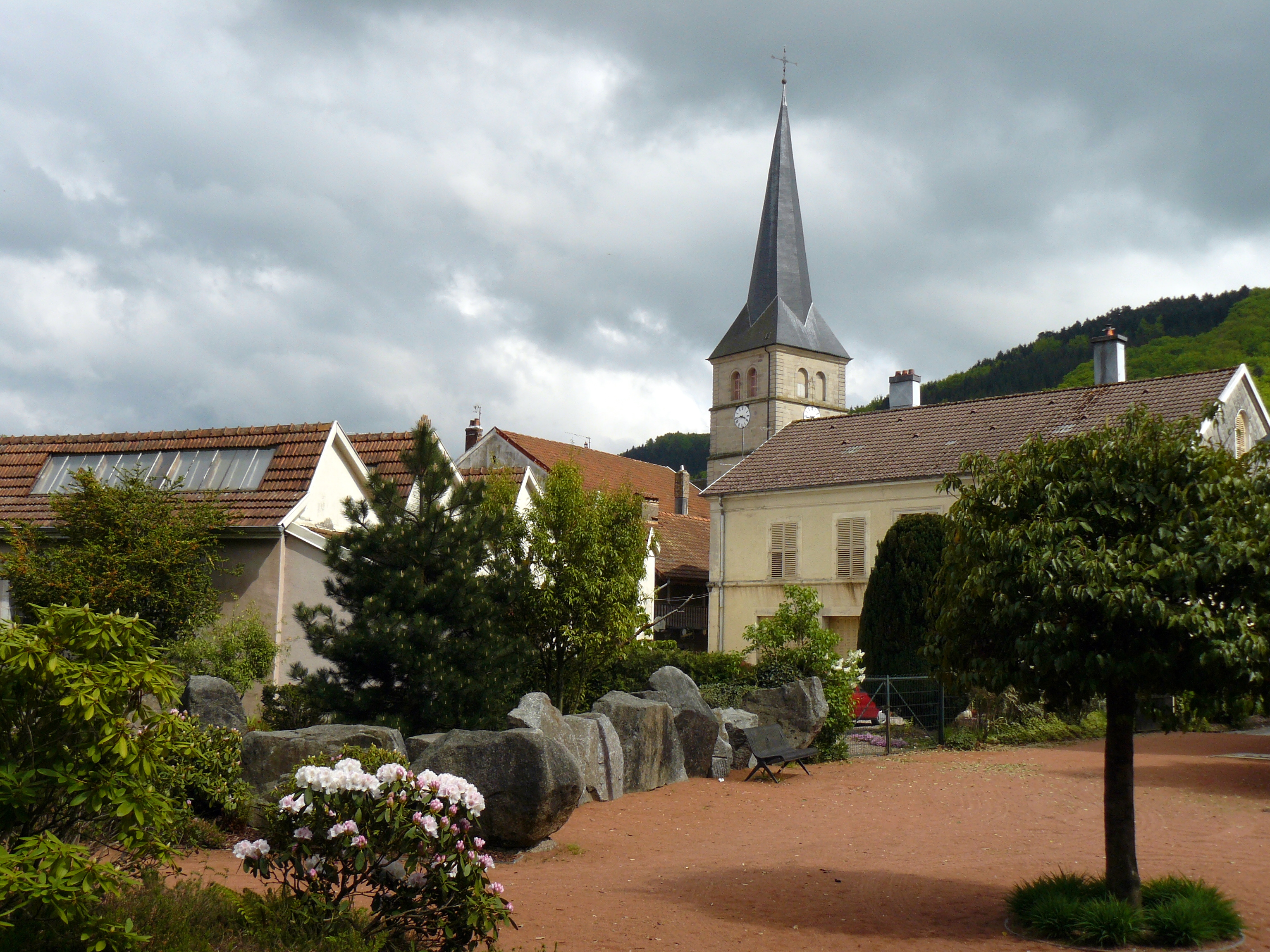
Copyrights Félix Potuit
France > Grand Est > Vosges > 88340 > Le Val-d'Ajol > 1 place de l'Hôtel de Ville
Located at 10km from Plombières-les-Bains, the village owes its fame to its speciality " l'Andouille du Val-d'Ajol " (registered trademark since 1984), made by the local butchers. It is celebrated every year during the Andouille Fair on the 3rd Monday of February. It is the largest commune in Lorraine and has a well-preserved architectural and cultural heritage: the church with its listed objects (altarpiece, pedestal, Christ on the cross, pulpit), the Hérival Priory (former monastery), the chalots (typical Vosges Saônoises farm outbuildings), the lava roofs as well as a large number of chapels, crosses, wash houses and fountains that make up the charm of the 70 hamlets in the commune that you can discover through the 150 km of marked out walks. A little history The first inhabitants of Val-d'Ajol could be either the Spaniards fleeing the Arabs (Poitiers 732), or the troops of Charlemagne passing through the region where he had family. They settled on a mound in the middle of a wet valley, now called La Croix, with the permission of the Ladies of Remiremont. The community grew and with their help obtained permission to build a church at a place called Laître (where a cemetery and a chapel existed). Materially, the valley depended on the Lady Chanoinesses of Remiremont, princesses of the Holy Roman Empire, under the protection of the Duke of Lorraine, but with direct reference to the Papacy. Spiritually, the Archbishopric of Besançon manages the community. The parish is served by the monks of Hérival. The territory saw the passage of Turenne's troops, the Swedes during the Thirty Years War, Charles IV, Duke of Lorraine trying to reconquer his duchy. Through the sovereignty of the Archbishop of Besançon, Louis XIV annexed the valley for a while. Nevertheless, the population increased and the church had to be enlarged. The inhabitants colonize the barns, where the animals used to graze, and numerous hamlets are created. The Duke Leopold recovers his duchy in 1704. In 1735 his son François III gave up the duchy for an Austrian title. Stanislas manages the duchy until 1766, then the valley becomes French. Mainly agricultural country, the commune will be transformed into an industrial valley after the war of 1970 with the arrival of Alsatian industrialists fleeing the German occupation. Spinning mills and weaving mills mainly benefited from the hydraulic power of the Combeauté. On the other hand, this lack of diversity led to a decrease in the population after the Second World War. Today, the Val-d?Ajol lives on crafts and small industries. The only memory of yesteryear is the Andouilles fair on the third Monday of February. This ancient fair (officialized by Louis Philippe in 1831 and confirmed by the prefect of the Vosges in 1852) was a cattle fair. The farmers renewed their livestock for the new season. After the Second World War, it fell victim to mechanization. This fair following the bet of a group of people with a Rabelaisian spirit found a second youth with the creation of a gastronomic brotherhood which praises the qualities of a local production: the Andouille. Since 1965, the Docte, Insigne et Gourmande Confrérie des Taste- Andouilles et Gandoyaux du Val-d?Ajol has been reviving this event. It now attracts 30,000 to 40,000 people over three days on the third Monday of February each year. Witnesses of the past In the commune of Val-d'Ajol, there are no less than 145 crosses listed (about 250 in the southern Vosges), of which 3 are classified as Historic Monuments.

Copyrights Félix Potuit
A proximité:
Datatourism data updated on: 2023-12-29 06:08:34.265